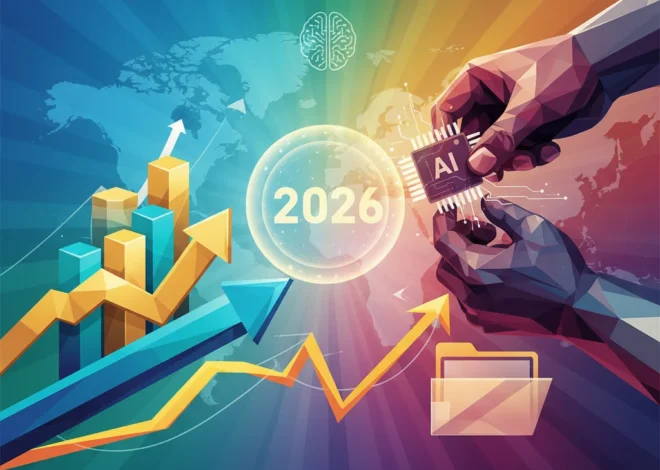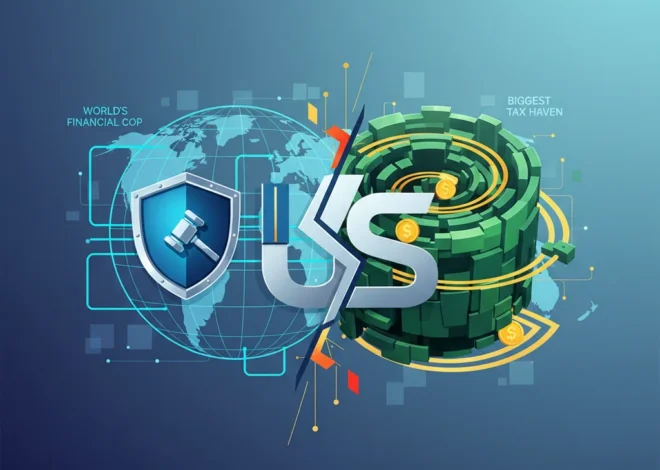
The Unseen Engine: Is America’s Real Skilled Visa Strategy Hiding in Plain Sight?
The debate over America’s ability to attract the world’s brightest minds is a perennial fixture in economic and political discourse. Pundits and policymakers lament a supposedly broken, bureaucratic federal immigration system, often pointing to the nail-biting H-1B visa lottery as a prime example of a nation failing to secure the talent it needs to fuel its innovation engine. The prevailing narrative suggests the U.S. lacks a coherent, strategic plan to compete for global expertise in an increasingly competitive world.
But what if this narrative is incomplete? What if America’s most effective strategy for attracting skilled professionals isn’t a grand, top-down federal initiative, but a dynamic, decentralized system already in motion? This is the provocative idea raised in a letter to the Financial Times by Barry O’Donovan, who suggests that the U.S. is, in effect, emulating the highly successful model of Ireland’s Industrial Development Agency (IDA) — not through a single federal body, but through the collective, competitive efforts of its individual states and cities.
This perspective reframes the entire conversation. It suggests that while Washington D.C. debates, economic development agencies from Austin to Boston are actively recruiting the world’s best engineers, scientists, and finance professionals. This blog post delves into this “de facto” U.S. talent strategy, examining its impact on the American economy, its parallels to proven international models, and the critical implications for investing, finance, and the future of financial technology.
The Federal Funnel: Understanding the Primary Visa Pathways
Before exploring the decentralized approach, it’s essential to understand the primary federal tools that companies use to bring skilled talent into the United States. While the system is complex, a few key visa categories form the backbone of skilled immigration, particularly in the technology and finance sectors.
These visas, despite their federal administration and often-criticized limitations, are the conduits through which a significant portion of global talent flows into the U.S. economy. For instance, a 2022 report highlighted that H-1B workers are crucial for filling skill gaps, especially in STEM fields, where demand often outstrips domestic supply (source). The competition is fierce; for fiscal year 2024, U.S. Citizenship and Immigration Services received a staggering 780,884 eligible registrations for just 85,000 available H-1B visas (source).
Below is a breakdown of the most common visas used by professionals and the companies seeking to hire them:
| Visa Category | Primary Purpose | Key Eligibility Requirements | Notable Feature |
|---|---|---|---|
| H-1B Visa | Specialty Occupations | Requires a bachelor’s degree or equivalent and a job offer in a specialized field (e.g., tech, finance, engineering). | Subject to an annual cap and a lottery system due to high demand. The lifeblood of the tech industry. |
| L-1 Visa | Intracompany Transferee | For employees of a multinational company transferring from a foreign office to a U.S. branch. Must have worked for the company abroad for at least one year. | Not subject to an annual cap, making it a crucial tool for global corporations in the banking and consulting sectors. |
| O-1 Visa | Extraordinary Ability | For individuals with demonstrated extraordinary ability in sciences, arts, education, business, or athletics. | A high bar to clear, but it allows top-tier talent, like Nobel laureates or groundbreaking fintech founders, to bypass the H-1B lottery. |
While these federal programs provide the legal framework, they don’t tell the whole story. The real strategic action, as O’Donovan’s letter suggests, is happening at a more local level.
Beyond the Box: Unpacking Tritax's £1 Billion Wager on the Future of Logistics
The IDA Model: A Lesson in Centralized Attraction
To appreciate the comparison, one must understand the machine that is IDA Ireland. For decades, Ireland has punched far above its weight in attracting foreign direct investment (FDI). A core reason is the IDA, a single, powerful government agency tasked with one mission: convincing the world’s best companies to set up shop in Ireland. It does this by offering a compelling package of low corporate taxes, a skilled workforce, and, crucially, a streamlined pathway for bringing in necessary global talent.
The results speak for themselves. The IDA is directly responsible for supporting over 300,000 jobs in Ireland, with its client companies contributing billions to the national economy. Dublin has become a major European hub for tech giants and a burgeoning center for fintech and blockchain innovation, largely thanks to the IDA’s focused efforts. This centralized model provides clarity, efficiency, and a single point of contact for multinational corporations making billion-dollar investing decisions.
The letter to the FT posits that the U.S. achieves a similar outcome not through one IDA, but through fifty of them. “The US has a highly effective, if unrecognised, national plan to attract skilled workers,” writes O’Donovan. “It’s called the 50 states of the union… all competing with each other to attract inward investment and the skilled people who come with it.” (source). This is where the narrative shifts from federal gridlock to state-level dynamism.
State-Level Hunger: The Competitive Cauldron of the U.S. Economy
Think of the fierce competition between Texas and California for tech companies, or between New York and Florida for hedge funds and finance professionals. This rivalry extends directly to talent acquisition. State and city economic development corporations (EDCs) work tirelessly to create environments that attract and retain skilled workers.
They do this by:
- Fostering Innovation Hubs: By investing in infrastructure and public-private partnerships, cities create specialized ecosystems. New York City’s focus on fintech, Boston’s biotech corridor, and Silicon Valley’s deep tech roots are not accidents. They are the result of deliberate, long-term local strategies designed to become magnets for the world’s best.
- Partnering with Universities: Major research universities are talent pipelines. States that heavily invest in their university systems attract top international students and researchers, many of whom later transition into the local workforce via programs like Optional Practical Training (OPT) and eventually H-1B visas.
- Offering Corporate Incentives: While controversial, tax breaks and other incentives offered to companies to relocate or expand are often implicitly tied to job creation, which includes roles filled by skilled immigrants who are essential for that company’s growth.
This state-level competition creates a diverse and resilient national economy. A downturn in one sector or region can be offset by growth in another. It allows for experimentation and specialization in a way a single, monolithic federal strategy never could. The impact on the stock market is profound; investors place bets not just on companies, but on the vitality of the ecosystems in which they operate.
A Toast to Economic Growth: Unpacking the Investment Potential of UK Pub Licensing Reforms
The Immigrant Edge in Innovation and Finance
The stakes in this global talent race are immense. The contribution of immigrants to the U.S. economy, particularly in high-growth sectors, is staggering. Research from the National Foundation for American Policy found that immigrants have started more than half (319 of 582) of America’s startup companies valued at $1 billion or more (source). These are the companies that disrupt industries, create hundreds of thousands of jobs, and drive significant returns for those investing in innovation.
In the world of finance and financial technology, this impact is particularly acute. The complex quantitative analysis behind modern trading algorithms, the development of secure blockchain ledgers, and the user-centric design of new banking apps are all fields dominated by individuals with advanced STEM degrees—a demographic where foreign-born talent is heavily represented. By attracting these individuals, U.S. financial centers maintain their global leadership and competitive edge.
The presence of this diverse talent pool creates a virtuous cycle: top talent attracts leading companies, which in turn attract more investment capital, further strengthening the ecosystem and drawing in even more talent. This cycle is the engine that has powered American economic dominance for decades.
The ,000 Gold Prophecy: Decoding Bank of America's Bold Bet on a New Commodity Supercycle
Is the Unseen Strategy Enough?
Acknowledging the power of America’s decentralized talent attraction model does not mean ignoring its flaws. The reliance on a cumbersome federal visa system creates enormous uncertainty for both employers and employees. The H-1B lottery is, by its very nature, a game of chance that leaves the fate of brilliant individuals and the plans of innovative companies to random selection. Many talented professionals, weary of the uncertainty, are increasingly choosing more welcoming destinations like Canada or the UK, which have more predictable, points-based immigration systems.
The decentralized approach also risks exacerbating regional inequality. States with more resources, established industries, and major universities have a significant advantage in the race for talent, potentially leaving other parts of the country behind. A lack of a cohesive national vision means there is no overarching strategy to direct talent towards areas of critical national need, whether in manufacturing, clean energy, or national security.
The path forward may lie in a hybrid approach: one that preserves the dynamism and competitive spirit of the state-led model while implementing federal reforms to make the visa process more predictable and strategic. Imagine a system where the federal government sets a higher, more flexible cap on skilled visas, but allocates a portion of those visas directly to states to award based on their specific economic needs. A state like Michigan could prioritize automotive engineers, while Oregon could focus on semiconductor experts. This would combine national intent with local intelligence, creating a truly formidable strategy for the 21st century.
Conclusion: Recognizing and Refining the Engine
The letter from Barry O’Donovan provides a crucial shift in perspective. America’s plan for skilled visas isn’t missing; it’s already happening, executed daily by governors, mayors, university presidents, and CEOs across the country. This decentralized, competitive, and somewhat chaotic system has been a remarkably effective engine of economic growth and innovation.
For investors, business leaders, and finance professionals, understanding this dynamic is key. The long-term health of the U.S. economy and the performance of the stock market are intrinsically linked to the nation’s ability to continue attracting and retaining the world’s best and brightest. The current system, for all its flaws, has delivered incredible results. The challenge now is not to invent a new strategy from scratch, but to recognize the power of the one that exists and to make the federal reforms necessary to supercharge it for the decades to come.


